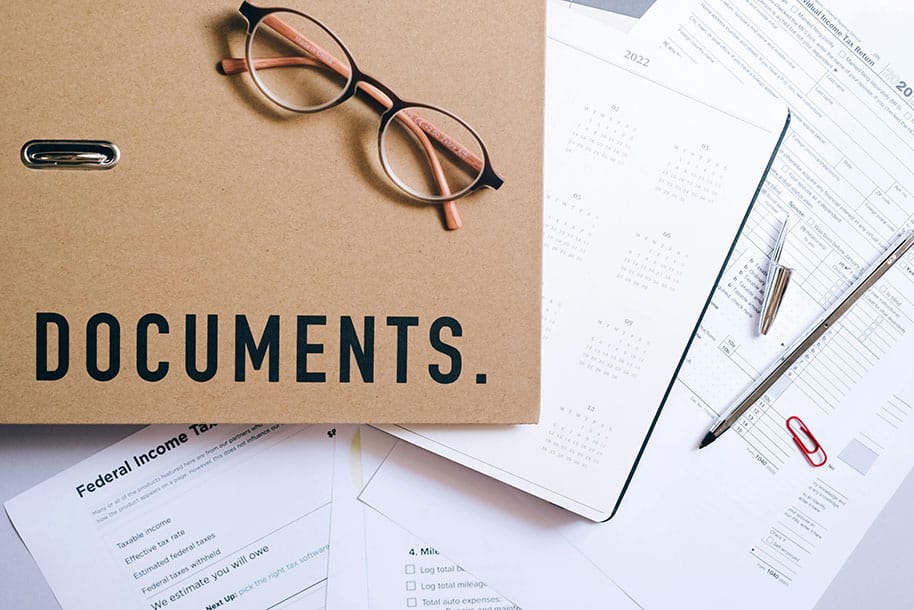The Canadian tax department may no longer be able to collect the taxes owing if you have an unpaid tax liability that is more than 10 years old and CRA has not contacted you to collect it, as further explained by a Canadian income tax lawyer in this article.
The Canadian Income Tax Act grants the Canada Revenue Agency, and consequently its tax collection officers, broad authority to pursue taxpayers for unpaid taxes. Powers that include the freezing of bank accounts, the seizing of or placing a lien on assets, and the garnishing of wages, all without a court order, often which come as a complete surprise to taxpayers.
However, there are several restrictions on the circumstances and timeframes under which the CRA may legitimately pursue action in order to collect income tax debts. The most typical limitation periods for Canada Revenue Agency collection actions will be covered in this article.
Initial Tax Collections Limitation
A tax debt to the Canadian tax department is legally established when a taxpayer is assessed or reassessed personally or in the regular course of business if there are taxes payable as a result. Despite the fact that a tax debt has been generated, the CRA cannot take immediate action to collect resulting from internal restrictions imposed by the Tax Act. According to section 225.1 of the Income Tax Act, the CRA may only start to collect 90 days after sending the taxpayer a notice of assessment or notice of reassessment.
There are certain specific exceptions to this initial “dead period” to collecting, but they are outside the purview of this article. See our post that focuses on the CRA‘s ability to recover debts.
10-Year Period Limit
The CRA may not begin or continue an action to collect a tax debt beyond the expiration of the limitation period for the collection of the debt, according to the Income Tax Act‘s subsection 222(3). The Income Tax Act specifies a 10-year limitation period, after which the Canada Revenue Agency is legally barred from collecting on a tax debt.
The 10-year limitation period is “reset” if the tax department takes any action to collect the tax debt, such as sending out a demand to pay letter, as stated in the Tax Act, which expressly permits the Minister to extend the period by virtue of subsection 222(5). The limitation period is also reset if the Minister issues a derivative assessment to any third party in relation to the tax debt, such as a spouse or relative or related corporation. The 10-year restriction will also reset if the taxpayer (or the taxpayer’s legal agent) acknowledges the debt.
As an illustration of how the limitation period would operate, say a tax debt is assessed in 2012and the CRA consistently pursues collection action against the taxpayer until 2015, the Minister would have 10 more years from the last date of collection action in 2015, that is to say until 2025, to make an effort to recoup the debt. The 10-year restriction period “restarts” essentially each time the tax collectors move forward with collection action. The 10-year statute of limitations prevents the CRA from continuing or restarting collection action if there has been no collection action for a period of 10 years plus one day, no debt acknowledgment by a taxpayer (or the taxpayer’s legal agent) in the previous 10 years, and no derivative assessment against a third party.
Confusingly, the insertion of paragraph 222(10) of the Income Tax Act ‘awakened’ all outstanding tax debts to the CRA prior to March 3, 2004. The earliest date on which all tax owed to the Minister prior to March 3, 2004, could therefore expire is March 3, 2014. The 10-year limitation period will have been reset if any legal action was brought before March 3, 2014, for a debt that was payable before that date.
The limitation period of 10 years was not always the rule. Section 32 of the Crown Liability and Proceedings Act was in effect prior to paragraph 222(3) of the Tax Act becoming operative. Under normal circumstances, the Crown has a 6-year limitation period during which it may prosecute any claims against any person unless Acts of Parliament provide otherwise. Because the Income Tax Act did not specify a limitation term, the Federal Court of Appeal upheld the 6-year period in Markevitch v. The Queen, 2001 FCA 144 in 2003. This ruling applies to tax debt collection by the Crown.
What Qualifies as a Collection Action?
Section 222(1) of the Income Tax Act of Canada defines a collections action as any action taken to collect a taxpayer’s tax debt. This could be a court proceeding, a collection action by the Canada Revenue Agency under section 203 of the Income Tax Act or any of the following subsections: 129(2), 131(3), 132(2), or 164(2):
- The Tax Department is permitted by Section 129(2) of the Income Tax Act to apply the refundable amount to the corporation’s outstanding tax liability instead of issuing a dividend refund under subsection 129(1) and to notify the corporation of that action. The 10-year limitation period for the corporate tax debtor is restarted if a dividend refund is applied to a corporation’s tax liability because this represents a collection action.
The Income Tax Act‘s subsection 164(2) permits the CRA to apply the refund amount to the taxpayer’s (current or future) tax liability or any other liability owed to the Federal or Provincial government and to notify the taxpayer of this action, instead of issuing a refund to the taxpayer under the refund section of the Income Tax Act (s. 164). The 10-year limitation period for the individual tax debtor is restarted if a refund is applied to a taxpayer’s tax or government liabilities because this represents a collection action.
What else could the Minister possibly collect?
The Tax Act lists numerous different collection mechanisms that give the Canada Revenue Agency a comprehensive range of remedies to recover debts, in addition to withholding a refund and applying the refund amount to the taxpayer’s tax debt.
According to subsection 223(2) of the Income Tax Act, the CRA may certify an outstanding tax amount and register a certificate under subsection 223(3) [the “section 223(2) certificate”] in the Federal Court without providing the taxpayer with notice. The certificate will be regarded as the judgment of the court. Sections 223(5) to 223(8) allow the Collections Officer to establish a charge, lien, priority, or other interest on property in any province using a certificate, notification, or writ that the Federal Court issues as proof of section 223(2) certificate. In practice, this implies that the CRA can do so without even notifying the tax debtor, resulting in the creation of a registered secured interest in the assets of the taxpayer. Therefore, those taxpayers seeking to take advantage of the 10-year limitation period would be wise to contact one of our knowledgeable Toronto tax lawyers, who can evaluate your case and identify whether the CRA has taken or is taking any collection action.
CRA may require payments to be made directly to them from a third party who is owed money by the taxpayer under the garnishment clause of subsection 224(1). In accordance with subsection 225(1), CRA may also order the seizure and auction of the taxpayer’s goods and chattels. According to subsections 225.1(1) to 225.1(4), if the taxpayer filed an appeal with the Tax Court of Canada, these collection powers cannot be used until 90 days after the Tax Court of Canada has rendered a final decision on the taxpayer’s appeal.
What options does a tax debtor have?
A tax debtor’s only option is to avoid admitting or paying the debt in order to shorten the period of collection as much as possible. The taxpayer can acknowledge the debt as described in subsection 222(6) of the Income Tax Act in one of three ways:
- A written promise to pay the debt;
- Making an acknowledgment of debt in writing; and
- Making a payment that was not honoured, such as a “bounced cheque,” or a supposed payment.
Any of these three actions by the taxpayer will cause a “reset” of the limitations period, starting over from the beginning. This is yet another good illustration of why CRA tax debtors would be well served to get expert tax guidance from one of our Toronto tax lawyers before speaking with Tax Collections Officers.
Contact our experienced Canadian Income Tax Lawyers if you owe a debt to the Canada Revenue Agency and are unsure of whether the limitation period has expired. With the aggressive collecting tactics of the Canada Revenue Agency, our income tax law firm can help you deal with them. Every step of the tax dispute process requires sound planning and strategy. At each level of the process, our Canadian tax law firm can provide you with the tax advice and assistance you need to prevail in your dispute, negotiation, and settlement with the Canadian Revenue Agency. We can also help make sure you aren’t paying the CRA more than it is legally required to collect.
Frequently Asked Questions
I have a 15-year-old CRA debt. I have been contacted by a CRA tax collections officer. What should I do?
You should not speak to the tax collections officer or take any other actions before consulting with a knowledgeable Canadian tax lawyer. There is a 10-year limitation period which may protect you from CRA collection actions. However, if you have acknowledged the debt, or if CRA has reset the limitation window by taking collection action, the amounts may still be owing.
Disclaimer:
“This article just provides broad information. It is only up to date as of the posting date. It has not been updated and may be out of date. It does not give legal advice and should not be relied on. Every tax scenario is unique to its circumstances and will differ from the instances described in the articles. If you have specific legal questions, you should seek the advice of a Canadian tax lawyer.”



